Posts for: E.L.. Shapiro
Jan 31, 2024 23:33:02 #
A properly designed, effective, and compatible lens hood is such that it is as deep as possible without vignetting for the focal length in use.
Over the years the high-end camera and lens makers produced lens shades specifically designed for each ofhte lenses. Included are Hasselbald, Leica, Nikon Canon, Zeiss, and just about all the better brands. If you buy a generic shade, you have to make certain it won't vignette- especially noticeable when the lens is stopped down.
Bellows, compendium, or matte-box-type shads are adjustable. Some are built on rails with focal length markings, and othere need to be tested by observing if there is any vignetting as you stop down the lens.
Over the years the high-end camera and lens makers produced lens shades specifically designed for each ofhte lenses. Included are Hasselbald, Leica, Nikon Canon, Zeiss, and just about all the better brands. If you buy a generic shade, you have to make certain it won't vignette- especially noticeable when the lens is stopped down.
Bellows, compendium, or matte-box-type shads are adjustable. Some are built on rails with focal length markings, and othere need to be tested by observing if there is any vignetting as you stop down the lens.
Jan 31, 2024 14:48:59 #
Telops develops high-performance hyperspectral imaging systems and infrared cameras for defense, industrial & …etc.
https://www.telops.com/
I remember the marking on the lens rim for my time in the military.
The manufacturers, names, classification, and model name or number are the mils. spec. identification numbers.
The lens is likely from an aerial reconissance and detection system possibly fr the Vietnam era.
https://www.telops.com/
I remember the marking on the lens rim for my time in the military.
The manufacturers, names, classification, and model name or number are the mils. spec. identification numbers.
The lens is likely from an aerial reconissance and detection system possibly fr the Vietnam era.
Jan 30, 2024 19:39:10 #
I think a section for abstract photograhy would be nice. and fun, however, there are already many sections that receive little or traffic, and yet another one? Who knows?
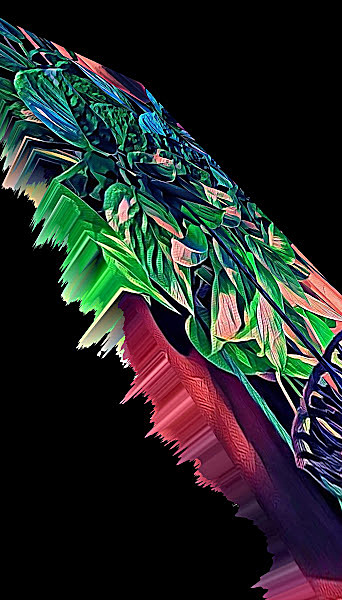
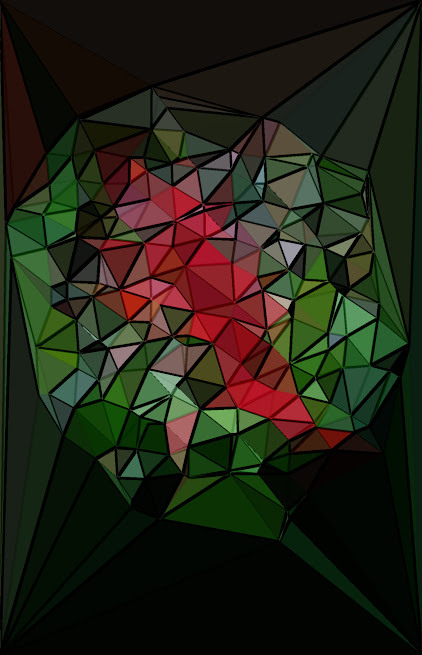
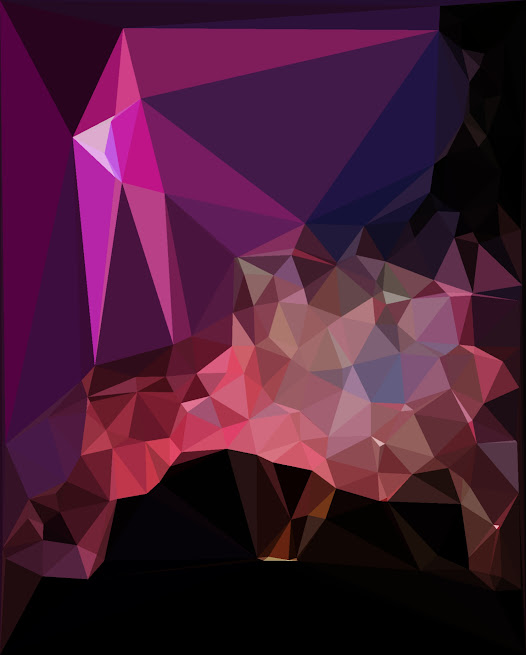
Jan 28, 2024 22:15:17 #
JohnSwanda wrote:
I think back in the film days, there were many photographers who didn't do darkroom work, but I doubt there were many photo lab technicians who weren't also photographers. My first job in photography was as a photo lab technician which I had learned how to do by doing my own darkroom work.
Funny y'all should mention this!
Wehen I started my first job in a studio, as a rookie shooter I was cast into the" dungeon" a high-production darkroom facility deep in the bowels of the building. We were processing and printing the work of 12 wedding photograhers and all the production for the portrat end of the business. The boos told me at after a year in the darkroom, I will become a better and more conscientious photographer. He was 100% right! The work of the best shooters was easy to print, the lighting and range were perfect, and very few of the negatives required very much dodging, burning, and/or cropping. The results were excellent because we could concentrate on the print quality and maximize the information in each negative. A few of the shooters were somewhat careless so producing halfway decet print from the jbs was "darkroom hell"! We had to dodge and burn. bleach, push process, and intensify the hell out of each shot. Exposure was erratic and composition and aspect ratios were all over the place- bad for wedding albums! That bunch was eventually fired and replaced.
The boss's motto was "We don't re-shoot every shot in the darkroom! That was 1959 and I still go by that philsophy- I don't want to reshoot any shots in the computer. I ain't perfect and everon screws somethgs up sometimes so it is great if we can salvage the odd blooper in post.
Special effects, graphic treatments, etc- I love them. Nowadays, in commercial photoghay, it is surprising what clients ask us to produce. There is a lot of stuff that used to be in th preview of art houses, and pre-press folks in the lithographic trades, that we are asked to produce in house. Nothing new- high contrast, texture screens, posterizations, solarizations, abstract imagery, and more. If you can generate some of that stuff you can improve your business and serve more markets. Besides, it's fun!
Jan 28, 2024 19:57:27 #
Categorizing folks and calling them "names' like "graphic artist" or whatever instead of photograher is kinda of silly. In any craft, not everyone does everything the same way and in exactly the same style.
In the film days, if a photograher did his own processing and printing, would he be called a "lab technician" and NOT a photograher? The computer" is the new darkroom. If you just do a few tweaks or radically change an image, it is still post-processing. Whether you use a complex multi-layered softwearor a simple app- it is still post-processing. If you alter an image to an extreme where it no longer qualifies as traditional photography, SO WHAT? You can be a graphic artist and a photographer- you can be a brain surgeon or a plumber and a photographer.
I am a photographer- I do it for a living. I am not a computer expert so when I use a computer to process my work, I am an appliance operator. I use it instead tanks, enlargers and a sink full of trays filled with chemicals.
I have been around photography as long as I can rememebr- over 60 years. I have known thousands of photoghrers- amateurs, rookie pros, seasond pros, snapshooters, whomever. I have never met anyone who gets up in the morning and decides to go out, shoot sloppily, spend hours and days patching up poorly crafted files and the tell everyone "I am a genius- look at masterpieces I created right out of the camera"! Not everyone is out to fool everyone else.
If you do not do photography for a living, the only people you need to satisfy are YOU and those who enjoy sharing your images.
If you enter a photography competition with categories to restrictions, you have to follow the rules, otherwise, there are no rules for your self-expression, methodology, or style.
In the film days, if a photograher did his own processing and printing, would he be called a "lab technician" and NOT a photograher? The computer" is the new darkroom. If you just do a few tweaks or radically change an image, it is still post-processing. Whether you use a complex multi-layered softwearor a simple app- it is still post-processing. If you alter an image to an extreme where it no longer qualifies as traditional photography, SO WHAT? You can be a graphic artist and a photographer- you can be a brain surgeon or a plumber and a photographer.
I am a photographer- I do it for a living. I am not a computer expert so when I use a computer to process my work, I am an appliance operator. I use it instead tanks, enlargers and a sink full of trays filled with chemicals.
I have been around photography as long as I can rememebr- over 60 years. I have known thousands of photoghrers- amateurs, rookie pros, seasond pros, snapshooters, whomever. I have never met anyone who gets up in the morning and decides to go out, shoot sloppily, spend hours and days patching up poorly crafted files and the tell everyone "I am a genius- look at masterpieces I created right out of the camera"! Not everyone is out to fool everyone else.
If you do not do photography for a living, the only people you need to satisfy are YOU and those who enjoy sharing your images.
If you enter a photography competition with categories to restrictions, you have to follow the rules, otherwise, there are no rules for your self-expression, methodology, or style.
Jan 28, 2024 18:55:27 #
PHRubin wrote:
THINK ABOUT IT. If a round light PATTERN lights all your camera sees, much light is wasted where it doesn't see (above & below for landscape orientation). Thus you have used more battery power than actually needed to provide that extra light. This would require fresh batteries sooner than if you only provided the light needed.
I can see your point- kinda! I never experienced any issues as per batteries in that I always use heavy-duty external powe packs when long duty cycles are expected. All my batteries are rechargeable and I get 300 to 400 full power flashes per charge. On long shoots, I routinely switch up batteries before they run out just to make sure I don't run out of juice at inopportune times.
Thanks for your feedback!
Jan 28, 2024 17:01:09 #
PHRubin wrote:
Really? Think about it. The light pattern matches the area being photographed.
As long as the flas unit can adequately and fully illuminate the field of view of the lens focal length in use the size or shape of the sensor does not, as far as I know, make a difference. Most better speed lights have a zoom feature to accommodate a range of focal lengths. I use rectangular speedlights, round-headed speedlights, and larger on-camera units with larger round heads and never experienced a falloff of light as long as the proper reflector or zoom setting is in place. The light pattern or beam emoted by the flas unit is reflected by the camera from the subject- the sensor only "sees" that light regardless of the primary source.
Nontheless, it cou be as you say. I learn new stuff every day. I just haven't seen anything in any of the resource literature that I checked out.
Jan 28, 2024 16:22:48 #
A scanner is your best bet. The only other (high-quality) alternative is COPYING with your camera which can be a time-consuming and cumbersome workflow. Original prints with various surfaces- glossy, matte, damaged, etc can be problematic. You will need 2 polarized light sources and a CPL filter on the camera to get reflection-free and decent quality.
Once scanned, can post-process, enhance quality when required, enlarge, and make montages or prints.
For this kind of work, I use the scanner/fax/printer in the office. I have another scanner in the studio that will accommodate prints and transparencies (slides).
I just scanned an OLD faded (hand-colored) wedding portrait of my wife's grandparents. Work in progress- to be restored.
Once scanned, can post-process, enhance quality when required, enlarge, and make montages or prints.
For this kind of work, I use the scanner/fax/printer in the office. I have another scanner in the studio that will accommodate prints and transparencies (slides).
I just scanned an OLD faded (hand-colored) wedding portrait of my wife's grandparents. Work in progress- to be restored.
Basic copy setup.
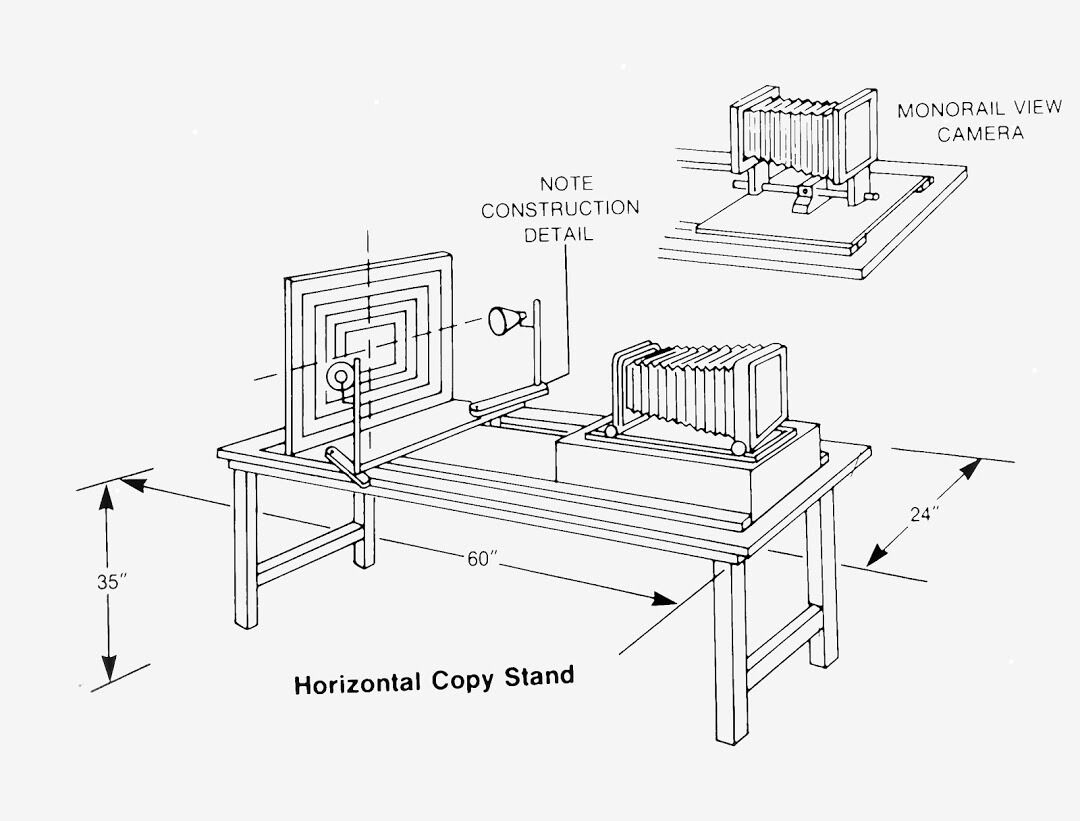
Copy Lighting
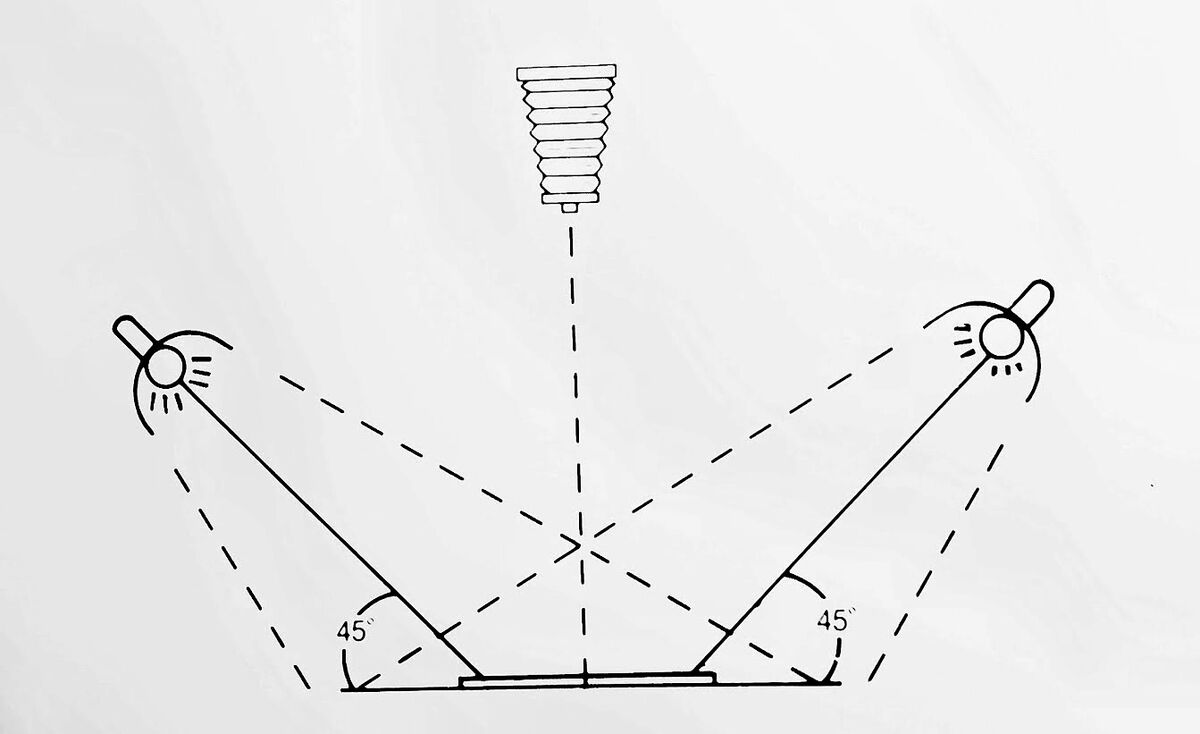
Scanned and restored tintype
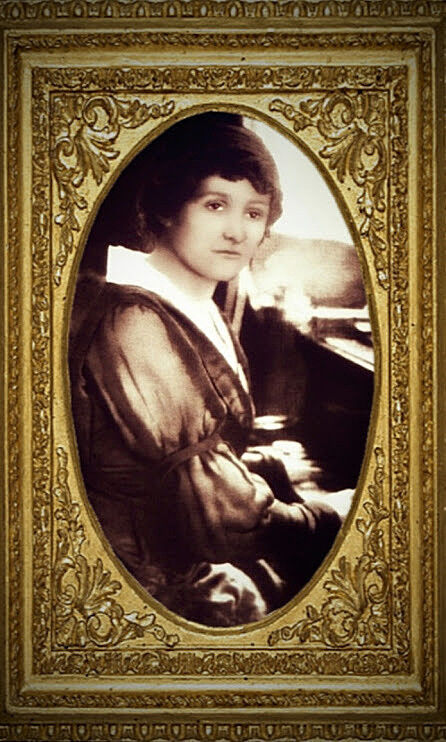
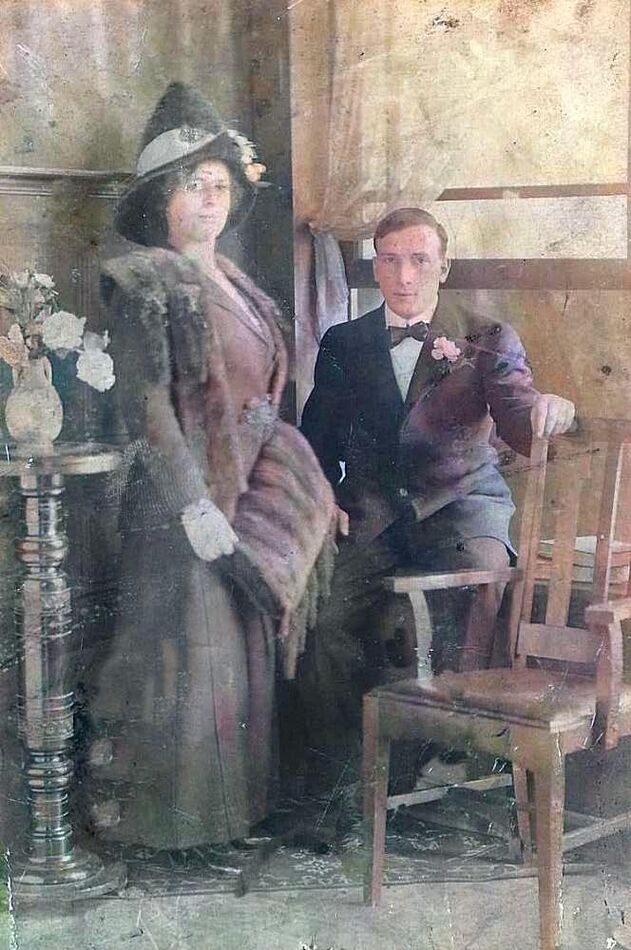
Jan 28, 2024 13:36:55 #
PHRubin wrote:
If you are only using one flash mounted on-camera, having the light pattern matching the sensor shape is helpful.
Interestig! How so? Just curious- never experience an issue as long as the flash unit covers the field of view.
I couldn't find any literature on that specific relationship.
Jan 28, 2024 11:50:16 #
What is truly "boring" is this continual argument about post-processing, realism vs. impressionism, filters, or no filters, etc..
Photography was not invented yesterday. "Processg" was always part of the equation. You exposed a film or a plane and you had to chemically PROCESS it to create an image. Serious, technically competent, and artistically inclined photograhers manipulate the images in development and/or printing to tweak the quality or apply a special effect. In a well-crafted image, from film or digital imaging. is produced in such a way that the manipulation or special effects do not call attention to themselves. A poorly crafted image will show the glitches!
As for color saturation? Years ago photographer shot Kodachrome and underexpss 1/2 a stop to increase saturation. Others shot Ecktachrome for a more realistic or neutral effect. Yet, some sho tSuper Anschrochrome and overexposed slightly for a pastel and grain effect. It's' a matter of TASTE and not everyone SEES things the same way.
Whatever you opted to do , you had to plan, select a film and process and follow through. Nowadays yo can just shoot and in post-process, you can make all sorts of alterations with a tweak of a slider and some folks SLIDE a bit much- but that is up to them! Some beginners tend to do that (it's fun) until they practice and gain more precise control.
Photography is a creative endeavor so why create LAWS or false ethics as to how folks should express THEIR visions and imaginations? All photogahy is not documentation and journalism. If you want your images to be as realistic as possibe- have at it. I do it every day in commercial work. If you want or need to change gears and do someth crazy or different, why not? Experiment, and if you don't like the results- it didn't cost you film, chemistry and paper. You don't even have to tear up the print and throw it in the garbage. You just click "delete" and it goes off to photo-purgatory, never again to be seen.
In post-processing, even the word "filter" is kind of a misnomer. In the olden days of film, you had to place a glass filter on your lens and undated HOW it is "filtering" out or minimizing certain colors and emphasizing others or how it affects the panchromatic renditions in monochromatic work. The presets or so-called filters in many software programs are just various moods and permutations so you just pick and choose- again, a personal choice.
Rant over , now as they say on TV talent contests- "let the battles begin"!
, now as they say on TV talent contests- "let the battles begin"!
Photography was not invented yesterday. "Processg" was always part of the equation. You exposed a film or a plane and you had to chemically PROCESS it to create an image. Serious, technically competent, and artistically inclined photograhers manipulate the images in development and/or printing to tweak the quality or apply a special effect. In a well-crafted image, from film or digital imaging. is produced in such a way that the manipulation or special effects do not call attention to themselves. A poorly crafted image will show the glitches!
As for color saturation? Years ago photographer shot Kodachrome and underexpss 1/2 a stop to increase saturation. Others shot Ecktachrome for a more realistic or neutral effect. Yet, some sho tSuper Anschrochrome and overexposed slightly for a pastel and grain effect. It's' a matter of TASTE and not everyone SEES things the same way.
Whatever you opted to do , you had to plan, select a film and process and follow through. Nowadays yo can just shoot and in post-process, you can make all sorts of alterations with a tweak of a slider and some folks SLIDE a bit much- but that is up to them! Some beginners tend to do that (it's fun) until they practice and gain more precise control.
Photography is a creative endeavor so why create LAWS or false ethics as to how folks should express THEIR visions and imaginations? All photogahy is not documentation and journalism. If you want your images to be as realistic as possibe- have at it. I do it every day in commercial work. If you want or need to change gears and do someth crazy or different, why not? Experiment, and if you don't like the results- it didn't cost you film, chemistry and paper. You don't even have to tear up the print and throw it in the garbage. You just click "delete" and it goes off to photo-purgatory, never again to be seen.
In post-processing, even the word "filter" is kind of a misnomer. In the olden days of film, you had to place a glass filter on your lens and undated HOW it is "filtering" out or minimizing certain colors and emphasizing others or how it affects the panchromatic renditions in monochromatic work. The presets or so-called filters in many software programs are just various moods and permutations so you just pick and choose- again, a personal choice.
Rant over
 , now as they say on TV talent contests- "let the battles begin"!
, now as they say on TV talent contests- "let the battles begin"!Jan 27, 2024 18:45:05 #
The shape ofhte sensor has not to do with the shape of the lamphead. When we used to film the cameras had square, oblong, and perhaps panoramic formats and the lights were round, square, and rectangular- as long as they cover the fied of view, you were good to go. It's not a matterof forcing a round peg into a square hole.
If you just want general illumination and just need enough flashlight to achieve adaquette exposure or as a fill source, any shape of Speedlight will do- no big difference. If you are into portraiture, feathers, and multiple flashes, and can understthe the advantages of the parabolic type reflection- you will be happier with a round head.
If you are an avid flash user and want a portable hand-held unit that is extremely versatile, go for the types with interchangeable reflectors, user-changeable flash tubes, and are capable of bare-bulb operation. If you need wide age or telephoto reflectrs- th are available- no zoon though- you to take the on and off. Many of these kids unts have lots of powere, up to 350 watt-seconds.
The round lamphead is not a useless marketing ploy. They have been around for eons and are a time-honored design.
If you just want general illumination and just need enough flashlight to achieve adaquette exposure or as a fill source, any shape of Speedlight will do- no big difference. If you are into portraiture, feathers, and multiple flashes, and can understthe the advantages of the parabolic type reflection- you will be happier with a round head.
If you are an avid flash user and want a portable hand-held unit that is extremely versatile, go for the types with interchangeable reflectors, user-changeable flash tubes, and are capable of bare-bulb operation. If you need wide age or telephoto reflectrs- th are available- no zoon though- you to take the on and off. Many of these kids unts have lots of powere, up to 350 watt-seconds.
The round lamphead is not a useless marketing ploy. They have been around for eons and are a time-honored design.
Jan 26, 2024 22:11:05 #
If you are a hobbyist, amateur photographer, family snapshooter or just doing photoghay for art's sake, you need NOT worry about AI. You can do whatever you like in photography, for as long as you want. You can go retro, use obsolete methods, wet plate, cyanotypes, film, or just stay with digital photoghay as long as the equipment and supplies are available. There is no force to prevent you from doing whatever you are doing." THE AI MONSER" will not come and swallow you and all your gear, Consider AI as just another technology or art form- nobody is telling you what to do.
Speaking as a COMMERCIAL photographer, a person who earns his living in photograhy, I am not overly concerned about AI. Over the years, many innovations and trends have emerged that have caused a reduction in the need for professional photographers. There has always been something. Cellphone selfies, cheap supermarkets, and department store mass-production portrait mills have almost eliminated the neighborhood brick-and-mortar portrait studio but the few that delivered superior, creative, and technically excellan work managed to survive and thrive. AI? A robot can not make a seriously great portrait, or cover a wedding or event The are many aspects of photoghay that require HUMAN contact between the photographer and their clients.
In commercial work, the same folks who use stock photos rather than images that are customized to their product, service, or brand, may go to AI. To continue no in business, creative and resoursful photoghaers have to continuously seek new marks and clients and do things that the machines can not. If Ai can be employed to augment their services or improve efficiency, it is just another tool and not a threat.
Will AI be misused, abused, and used for nefarious or destructive purposes- you bet! Just like everything else tha was supposed to be beneficial- the internet, nuclear energy, superhighways, drugs, and all sorts of technologies. Do we go backward and cnacell them? Make beleive they don't exist? We deal with all of it, regular them, and use it all for the good.
Speaking as a COMMERCIAL photographer, a person who earns his living in photograhy, I am not overly concerned about AI. Over the years, many innovations and trends have emerged that have caused a reduction in the need for professional photographers. There has always been something. Cellphone selfies, cheap supermarkets, and department store mass-production portrait mills have almost eliminated the neighborhood brick-and-mortar portrait studio but the few that delivered superior, creative, and technically excellan work managed to survive and thrive. AI? A robot can not make a seriously great portrait, or cover a wedding or event The are many aspects of photoghay that require HUMAN contact between the photographer and their clients.
In commercial work, the same folks who use stock photos rather than images that are customized to their product, service, or brand, may go to AI. To continue no in business, creative and resoursful photoghaers have to continuously seek new marks and clients and do things that the machines can not. If Ai can be employed to augment their services or improve efficiency, it is just another tool and not a threat.
Will AI be misused, abused, and used for nefarious or destructive purposes- you bet! Just like everything else tha was supposed to be beneficial- the internet, nuclear energy, superhighways, drugs, and all sorts of technologies. Do we go backward and cnacell them? Make beleive they don't exist? We deal with all of it, regular them, and use it all for the good.
Jan 26, 2024 19:05:00 #
Oh! I forgot about the bracket issue.
If you are using on-camera flash as a man of fill light, that kind of bracket is the best approach. It keeps the unit about 12" over the lens and precludes distracting background shadows in nearby walls and "red eye". It will improve the modeling and depth of light SLIGHTLY!
It will work well with a road or rectangular head.
If you are using on-camera flash as a man of fill light, that kind of bracket is the best approach. It keeps the unit about 12" over the lens and precludes distracting background shadows in nearby walls and "red eye". It will improve the modeling and depth of light SLIGHTLY!
It will work well with a road or rectangular head.
Jan 26, 2024 17:43:44 #
Many reasons, but they are not necessarily only what advertising hype says.
If yo are a long-time flash user, you might remember the "old school" strobes. They were comprised of a comparatively large round lamp head powered by an external shoulder or belt-carried power supply. Mostof those unts had a well-placed helical or U-shaped flash tube and a matte or stippled finished reflector surface. This configuration yielded a soft and more even light than most current rectangular Speedlights. Even with an on-camera single light, the results were usually softer and more natural than what is obtained with many of the latest unmodified speedlights.
The average small rectangular Speedlight utilizes a small linear flash tube in a comparatively small enclosure with a highly polished metal or kind of Morror-Mylar reflector. There is a plastic lenticular-like lens to somewhat diffuse and spread the light but it is not the same as the larger lampheads as described above. If the Speedlight has a zoom enablement, it will be softer and have more coverage in wide-angle mode.
A backstory: The big old round units were very popular among wedding photographers. Back in the day, wedding photoghay was in the preview of many local and established portrat studios. Mostof the better wedding shooters were trained in portrait techniques and applied them to their candid work. The technique of feathering is best applied with a parabolic reflector in play and the softer and wider lightg pattern and quality were well suited for group, full-length shots and were less likely to burn out and deliver detal in broad gowns. The old unts were in the 100 to the 200-watt-second range so there was plety of power to compensate for the soft working reflectors. The average speedlights weigh in at 75 to 85-watt seconds and get their effective power from a more concentrated beam and a highly polished reflector.
The latest round-head Speedligh from Godox? It's a nice little unit. The round head, as per their tests and illustrations, is an improvement over the rectangular models and for me, somewhat reminiscent of the old-time units, plus, there's an n available external power pack for more flash per charge. There is a nice kit of easily attachable modofires. I think it has a usable onboard modelig lamp.
My rough guess is that it will not exactly substitute for a unit with a much larger lamp head and reflector but it is a marked improvement over the usual Speedlights. One of my second shooters has 2 of them and the results are quite good. Size and portability is an advantage over larger units.
If yo are a long-time flash user, you might remember the "old school" strobes. They were comprised of a comparatively large round lamp head powered by an external shoulder or belt-carried power supply. Mostof those unts had a well-placed helical or U-shaped flash tube and a matte or stippled finished reflector surface. This configuration yielded a soft and more even light than most current rectangular Speedlights. Even with an on-camera single light, the results were usually softer and more natural than what is obtained with many of the latest unmodified speedlights.
The average small rectangular Speedlight utilizes a small linear flash tube in a comparatively small enclosure with a highly polished metal or kind of Morror-Mylar reflector. There is a plastic lenticular-like lens to somewhat diffuse and spread the light but it is not the same as the larger lampheads as described above. If the Speedlight has a zoom enablement, it will be softer and have more coverage in wide-angle mode.
A backstory: The big old round units were very popular among wedding photographers. Back in the day, wedding photoghay was in the preview of many local and established portrat studios. Mostof the better wedding shooters were trained in portrait techniques and applied them to their candid work. The technique of feathering is best applied with a parabolic reflector in play and the softer and wider lightg pattern and quality were well suited for group, full-length shots and were less likely to burn out and deliver detal in broad gowns. The old unts were in the 100 to the 200-watt-second range so there was plety of power to compensate for the soft working reflectors. The average speedlights weigh in at 75 to 85-watt seconds and get their effective power from a more concentrated beam and a highly polished reflector.
The latest round-head Speedligh from Godox? It's a nice little unit. The round head, as per their tests and illustrations, is an improvement over the rectangular models and for me, somewhat reminiscent of the old-time units, plus, there's an n available external power pack for more flash per charge. There is a nice kit of easily attachable modofires. I think it has a usable onboard modelig lamp.
My rough guess is that it will not exactly substitute for a unit with a much larger lamp head and reflector but it is a marked improvement over the usual Speedlights. One of my second shooters has 2 of them and the results are quite good. Size and portability is an advantage over larger units.
Jan 24, 2024 14:07:34 #
dustie wrote:
Can't you hear the din of responses now? ---
"How many of the early pioneers of photography even had a one-page manual to wade through? If they did okay without readin' any manual, why can't we?"
😋😋
"How many of the early pioneers of photography even had a one-page manual to wade through? If they did okay without readin' any manual, why can't we?"
😋😋
They might have done better and lived longer if there was some literature at their disposal. If you read into the history of photoghay you will find a lot of the early practitioners were found dead in their laboratories. The EPA and other protective organizations were not around to insist on all those pesky warning labels on all that mercury and stuff that emitted deadly gasses and corrosive substances. Nothing is as uncreative as a dead photographer!
I wonder how many self-incinerated with falsh powder.
